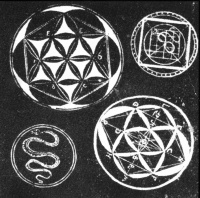Italian literature
From The Art and Popular Culture Encyclopedia
| Revision as of 20:20, 10 October 2022 Jahsonic (Talk | contribs) ← Previous diff |
Revision as of 20:21, 10 October 2022 Jahsonic (Talk | contribs) Next diff → |
||
| Line 3: | Line 3: | ||
| {| class="toccolours" style="float: left; margin-left: 1em; margin-right: 2em; font-size: 85%; background:#c6dbf7; color:black; width:30em; max-width: 40%;" cellspacing="5" | {| class="toccolours" style="float: left; margin-left: 1em; margin-right: 2em; font-size: 85%; background:#c6dbf7; color:black; width:30em; max-width: 40%;" cellspacing="5" | ||
| | style="text-align: left;" | | | style="text-align: left;" | | ||
| - | Canon: [[Gabriele D'Annunzio]], [[Giovanni Boccaccio]], [[Giordano Bruno]], [[Giacomo Casanova|Casanova]], [[Traiano Boccalini]], [[Umberto Eco]], [[Alberto Moravia]], [[Luigi Pirandello]], [[Pitigrilli]], [[Isabella Santacroce]] | + | Canon: [[Gabriele D'Annunzio]], [[Giovanni Boccaccio]], [[Giordano Bruno]], [[Dino Buzzati]], [[Giacomo Casanova|Casanova]], [[Traiano Boccalini]], [[Umberto Eco]], [[Alberto Moravia]], [[Luigi Pirandello]], [[Pitigrilli]], [[Isabella Santacroce]] |
| |} | |} | ||
Revision as of 20:21, 10 October 2022
|
Canon: Gabriele D'Annunzio, Giovanni Boccaccio, Giordano Bruno, Dino Buzzati, Casanova, Traiano Boccalini, Umberto Eco, Alberto Moravia, Luigi Pirandello, Pitigrilli, Isabella Santacroce |
|
Related e |
|
Featured: |
Italian literature is written in the Italian language, particularly within Italy. It may also refer to literature written by Italians or in Italy in other languages spoken in Italy, often languages that are closely related to modern Italian. An early example of Italian literature is the tradition of vernacular lyric poetry performed in Occitan, which reached Italy by the end of the 12th century. In 1230, the Sicilian School is notable for being the first style in standard Italian. Dante, one of the greatest of Italian poets, is notable for his Divina Commedia. Petrarch did classical research and wrote lyric poetry. Renaissance humanism developed during the 14th and the beginning of the 15th centuries. Humanists sought to create a citizenry able to speak and write with eloquence and clarity. Early humanists, such as Petrarch, were great collectors of antique manuscripts. Lorenzo de Medici shows the influence of Florence on the Renaissance. Leonardo da Vinci wrote a treatise on painting. The development of the drama in the 15th century was very great. The fundamental characteristic of the era following Renaissance is that it perfected the Italian character of its language. Machiavelli and Guicciardini were the chief originators of the science of history. Pietro Bembo was an influential figure in the development of the Italian language and an influence on the 16th-century revival of interest in the works of Petrarch.
In 1690 the Academy of Arcadia was instituted with the goal of "restoring" literature by imitating the simplicity of the ancient shepherds with sonnets, madrigals, canzonette and blank verse. In the 17th century, some strong and independent thinkers, such as Bernardino Telesio, Lucilio Vanini, Bruno and Campanella turned philosophical inquiry into fresh channels, and opened the way for the scientific conquests of Galileo Galilei, who is notable both for his scientific discoveries and his writing. In the 18th century, the political condition of Italy began to improve, and philosophers throughout Europe in the period known as The Enlightenment. Apostolo Zeno and Metastasio are two of the notable figures of the age. Carlo Goldoni, a Venetian, created the comedy of character. The leading figure of the literary revival of the 18th century was Giuseppe Parini.
The ideas behind the French Revolution of 1789 gave a special direction to Italian literature in the second half of the 18th century. Love of liberty and desire for equality created a literature aimed at national object. Patriotism and classicism were the two principles that inspired the literature that began with Vittorio Alfieri. Other patriots included Vincenzo Monti and Ugo Foscolo. The romantic school had as its organ the Conciliatore established in 1818 at Milan. The main instigator of the reform was Manzoni. The great poet of the age was Giacomo Leopardi. History returned to its spirit of learned research. The literary movement that preceded and was contemporary with the political revolution of 1848 may be said to be represented by four writers - Giuseppe Giusti, Francesco Domenico Guerrazzi, Vincenzo Gioberti and Cesare Balbo. After the Risorgimento, political literature becomes less important. The first part of this period is characterized by two divergent trends of literature that both opposed Romanticism, the Scapigliatura and Verismo. Important early 20th century writers include Italo Svevo and Luigi Pirandello (winner of the 1934 Nobel Prize in Literature). Neorealism was developed by Alberto Moravia. Umberto Eco became internationally successful with the Medieval detective story Il nome della rosa (The Name of the Rose, 1980).
See also


